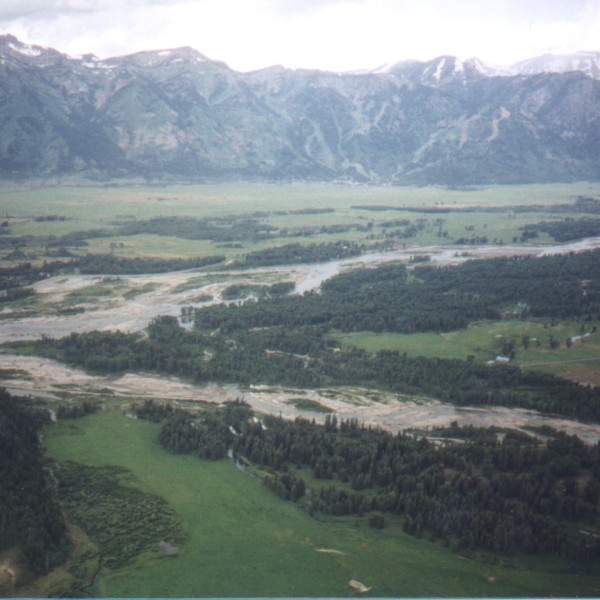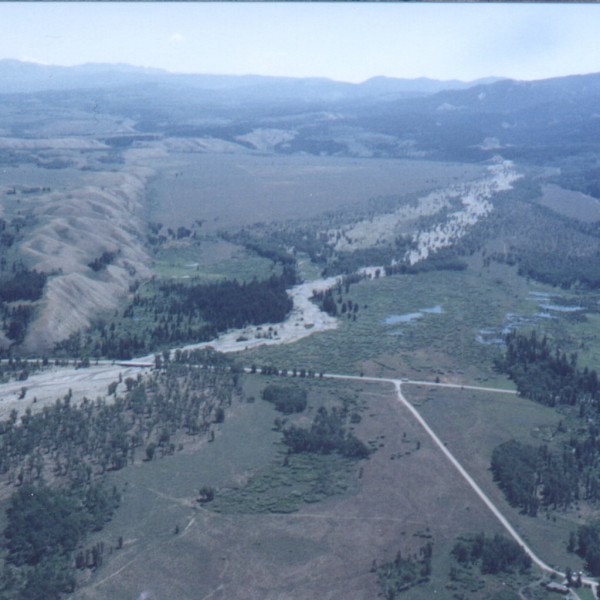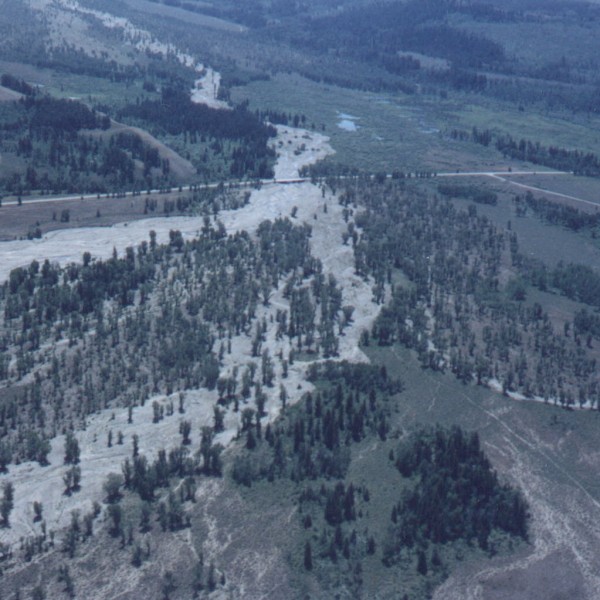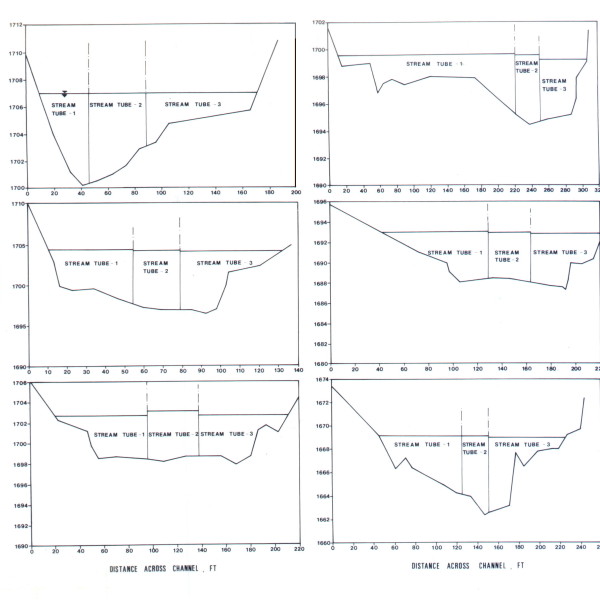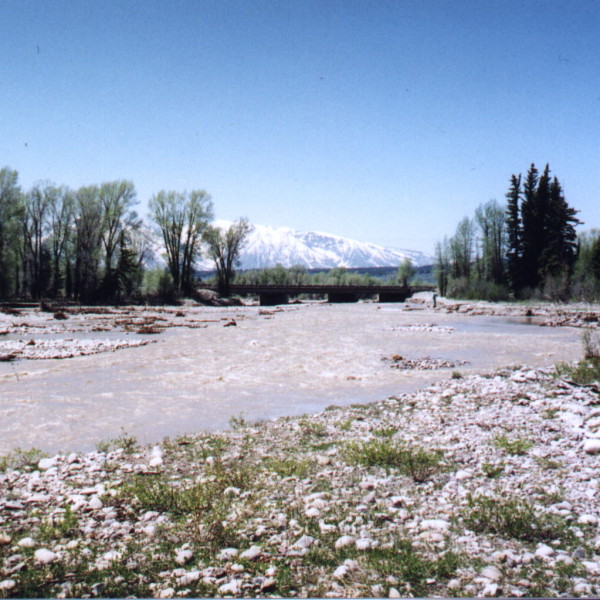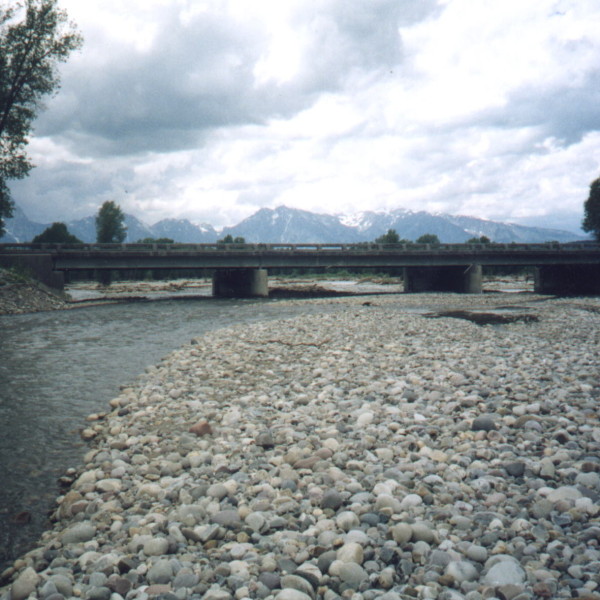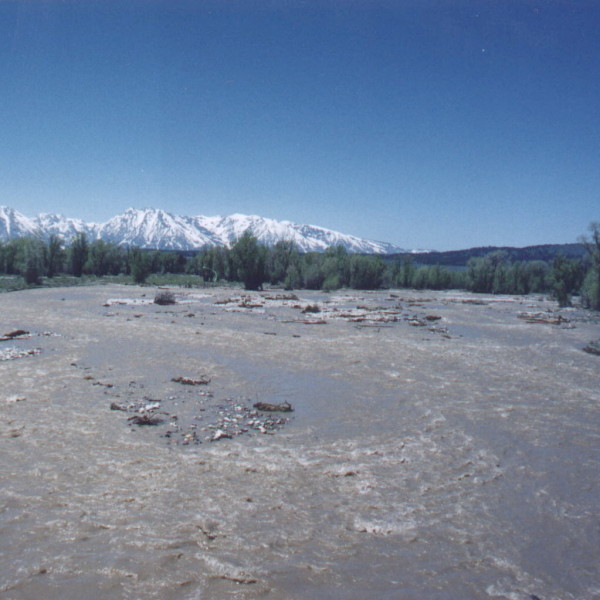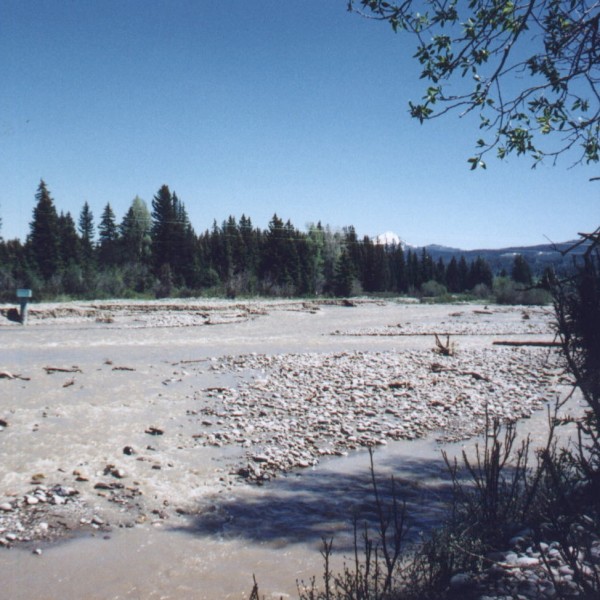Spread Creek flows through Grand Teton National Park for about 3.5 miles upstream from its confluence with the Snake River (Figure 1). It drains approximately 108 square miles and flows generally West, entering the Snake River about 8 miles downstream from the Jackson lake Dam. Spread Creek is an aggrading stream along its lower reaches forming an alluvial fan downstream from the State Highway 89 Bridge as shown in Figures 2 and 3.
In a series of projects, Dr. Molinas examined for the Federal Highway Administration and National Park Service the possible effects of gravel extraction from the Spread Creek drainage system. In the first of these projects, a mathematical modeling of the area was carried out in order to predict the response of the system to gravel extraction from 3 alternative sites identified by the project team. The computer modeling study aimed at evaluating the relative impacts of various gravel extraction scenarios by numerically placing gravel pits along the river channel, each measuring 500,000 cubic yards in volume.
The model selected for the study was the BRI-STARS model developed for FHWA by Dr. Molinas, Hydrau-Tech. BRI-STARS model is uniquely capable of routing water and sediment under supercritical, subcritical, and a combination of both flow regimes. Since Spread Creek is a steep-gradient stream with an average slope of 1.5 percent, this capability was crucial. BRI-STARS is a semi-two-dimensional model that utilizes stream tubes in its hydraulic and sediment routing computations. As a result, while part of the channel is eroding, other parts may experience deposition. This feature is a much-needed feature in modeling gravel pits that occupy only a portion of the channel.
Following the numerical modeling phase, it was determined that the system was capable of replenishing the gravel extracted from the area within a time period containing a 10-year frequency flood. It was also shown that in the absence of gravel extraction, channel maintenance was necessary to keep the existing river alignment from shifting away from the highway bridge. In the second and third phases of the study, a 7-year data collection program was implemented in order to verify the model results, and if needed, to make revisions to model predictions. The data collected included cross sections upstream and downstream from the bridge, discharge, sediment properties, and other pertinent hydrologic information. Within the data collection period, an event determined to be a 10-year flood was also recorded. Figures 5 and 6 show the approach channel to the highway bridge and figures 7 through 9 show the sediment accumulation along the main channel after 7 years.
The model predictions were very close to observed values at the end of data collection period, and did not require recalibration. As shown in figures 5 through 9 there was ample gravel supply into the study area as predicted by BRI-STARS, and the 10-year flood event required the removal of sediment from blocking the bridge. The required gravel extraction took place from an upstream location on the flood plain separated from the main channel by a buffer zone. The width of this buffer zone was determined from model predictions.


